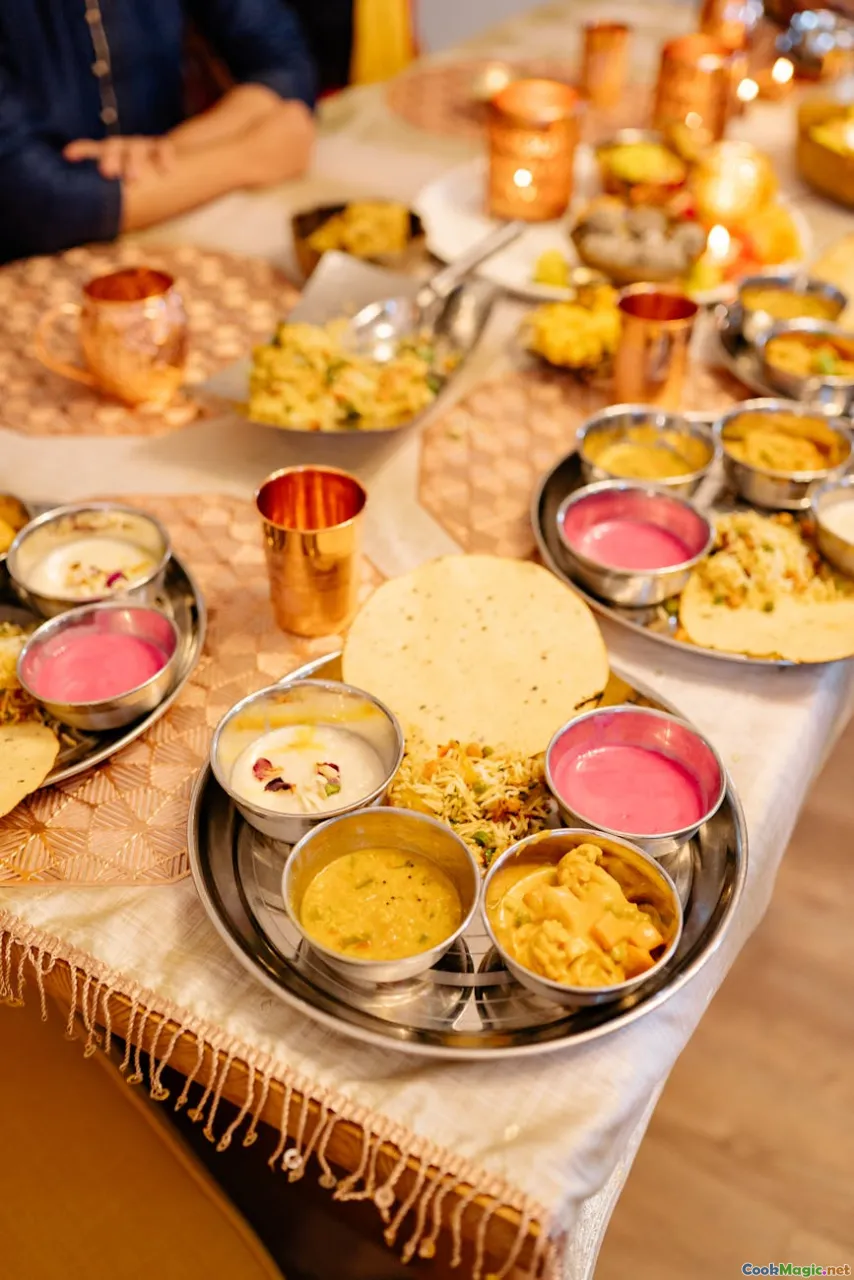Understanding Traditional Indian Food Pairings
8 min read Dive into the rich world of Indian food pairings, exploring how flavors, spices, and cultural practices create harmonious culinary experiences. April 24, 2025 03:00
Understanding Traditional Indian Food Pairings
Imagine walking through a bustling Indian market at dawn, where the air is thick with the aroma of freshly ground spices, sizzling dals, and sweet, fragrant chai. Each stall beckons with vibrant colors and tantalizing scents that promise a symphony of flavors. This sensory overload isn’t just a feast for the senses—it’s a reflection of a culinary philosophy deeply rooted in centuries of tradition: the art of food pairing.
The Cultural Tapestry of Indian Food Pairings
Indian cuisine is renowned for its complex layers of flavor, achieved through an intricate dance of spices, herbs, and cooking techniques. But beyond the ingredients themselves, what truly elevates Indian dishes is how they are paired—both in terms of ingredients and in the cultural context.
A Historical Perspective
Historically, Indian food pairings have been shaped by geography, climate, and social customs. The diverse landscape—from the lush Gangetic plains to the arid Thar Desert—has influenced the availability of ingredients and cooking styles. For example, coastal regions like Kerala favor coconut and seafood, while the Punjab plains excel in wheat-based breads and dairy.
The Mughal era introduced Persian and Central Asian influences, enriching Indian culinary traditions with rich gravies, saffron, and dried fruits, which are often paired with rice and bread to balance the richness.
The Philosophy of Balance and Harmony
At the heart of Indian food pairing lies the concept of Rasa—the aesthetic essence of a dish—emphasizing balance among six tastes: sweet, sour, salty, bitter, pungent, and astringent. Master chefs and home cooks alike seek to harmonize these tastes within a meal, ensuring that no single flavor overwhelms the palate.
The Building Blocks of Indian Food Pairings
Spices and Their Synergies
Indian cooking is synonymous with a vibrant palette of spices—cumin, coriander, turmeric, cinnamon, cardamom, cloves, and more. Each spice has a distinct flavor profile, but their true magic lies in how they are combined.
For example, cumin and coriander often appear together, providing a warm, earthy base for curries. Meanwhile, cinnamon and cardamom add sweet, aromatic notes that complement rice and desserts.
Herbs and Vegetables
Fresh herbs like cilantro, mint, and fenugreek leaves are used to brighten and elevate dishes. Vegetables such as eggplant, okra, and gourds are paired with spices to create balanced, hearty meals.
Dairy and Legumes
Dairy products—yogurt, ghee, and milk—are integral, tempering heat and adding richness. Legumes like lentils and chickpeas form the backbone of many vegetarian dishes, their earthy flavors harmonizing with aromatic spices.
Classic Indian Food Pairings: A Deep Dive
Rice and Lentils: The Staple Duo
Perhaps the most iconic pairing in Indian cuisine is rice and lentils, exemplified by dishes like dal chawal. The creamy, spiced lentil stew provides a hearty, protein-rich companion to fluffy steamed rice. The subtle flavors allow for the addition of pickles, chutneys, or a dollop of ghee, enhancing the overall experience.
Breads and Curries
Indian breads—roti, naan, paratha—are designed to scoop up curries, gravies, and vegetable dishes. Their texture and flavor are carefully matched; for instance, garlic naan pairs wonderfully with spicy, tomato-based curries, balancing the heat with its aromatic profile.
Chutneys and Pickles
Condiments like mint chutney, mango pickle, or tamarind sauce serve as flavor amplifiers, balancing spicy or bland dishes with their tangy, sweet, or fiery notes.
Sweet and Spicy Combinations
Desserts such as gulab jamun or kheer often contrast with savory dishes, providing a sweet counterpoint that completes the meal. Spicy snacks like samosas are paired with tangy chutneys to create a layered flavor experience.
Personal Insights and Cultural Nuances
Having traveled extensively through India—from the bustling streets of Delhi to the tranquil backwaters of Kerala—I've come to appreciate that food pairing is as much an emotional experience as it is a culinary technique. Sharing a plate of steaming biryani or a bowl of spicy rasam with friends or family fosters a sense of community, tradition, and shared history.
In many households, food pairing traditions are passed down through generations, with recipes and combinations evolving subtly over time. The practice of pairing sweet lassi with spicy curry, for instance, is not just about flavor but also about soothing the palate.
Regional Variations
In South India, rice and coconut form the cornerstone of food pairings, with dishes like idli, dosa, and sambar showcasing the harmonious blend of grains, legumes, and spices. Conversely, North Indian cuisine emphasizes wheat-based breads paired with rich, cream-laden curries.
Modern Interpretations and Fusion
While traditional pairings remain central, contemporary chefs are experimenting with fusion concepts—pairing Indian spices with international ingredients or reimagining classic dishes. These innovations highlight the versatility and timeless appeal of Indian flavor principles.
Final Thoughts: The Art of Pairing as a Cultural Expression
Understanding Indian food pairings is more than a culinary exercise; it’s an immersive journey into a culture that values harmony, balance, and storytelling through food. Whether it's the subtle interplay of spices in a paneer tikka masala, the comforting union of rice and dal, or the vibrant contrast of sweet and spicy desserts, each pairing encapsulates centuries of tradition and emotion.
Next time you sit down to an Indian meal, pay attention to the elements on your plate—their colors, textures, and aromas—and appreciate the thoughtful symphony they create. In doing so, you'll not only taste the food but also savor the rich cultural heritage that makes Indian cuisine truly extraordinary.









